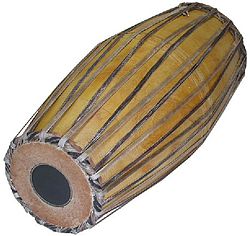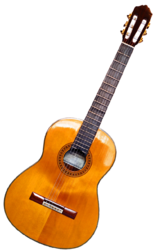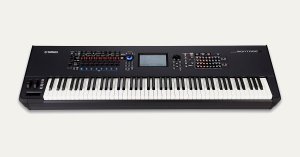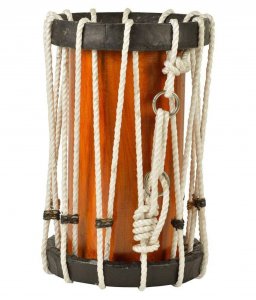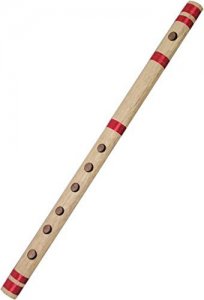violin
The violin, also known informally as a fiddle, is a wooden string instrument in the violin family. Most violins have a hollow wooden body. It is the smallest and highest-pitched instrument in the family in regular use. Smaller violin-type instruments are known, including the violino piccolo and the kit violin, but these are virtually unused. The violin typically has four strings tuned in perfect fifths, and is most commonly played by drawing a bow across its strings, though it can also be played by plucking the strings with the fingers (pizzicato) and by striking the strings with the wooden side of the bow
violin
The violin, also known informally as a fiddle, is a wooden string instrument in the violin family. Most violins have a hollow wooden body. It is the smallest and highest-pitched instrument in the family in regular use. Smaller violin-type instruments are known, including the violino piccolo and the kit violin, but these are virtually unused. The violin typically has four strings tuned in perfect fifths, and is most commonly played by drawing a bow across its strings, though it can also be played by plucking the strings with the fingers (pizzicato) and by striking the strings with the wooden side of the bow
Mridangam
The mridangam a name derived from ‘Mrudanga’ is a percussioninstrument from India of ancient origin. It is the primary rhythmic accompaniment in a Carnatic music ensemble, and in Dhrupad, where it is known as the pakhawaj.During a percussion ensemble, the mridangam is often accompanied by the ghatam, kanjira, and morsing. Its use has declined both in India and abroad due to postural problems associated with long-term playing of the drum, rising costs of production, short life span of the drum and the ethical considerations of producing the drum from animal skin.
Mridangam
The mridangam a name derived from ‘Mrudanga’ is a percussioninstrument from India of ancient origin. It is the primary rhythmic accompaniment in a Carnatic music ensemble, and in Dhrupad, where it is known as the pakhawaj.During a percussion ensemble, the mridangam is often accompanied by the ghatam, kanjira, and morsing. Its use has declined both in India and abroad due to postural problems associated with long-term playing of the drum, rising costs of production, short life span of the drum and the ethical considerations of producing the drum from animal skin.
Guitar
The guitar is a fretted musical instrument that usually has six strings. It is typically played with both hands by strumming or plucking the strings with either a guitar pick or the finger(s)/fingernails of one hand, while simultaneously fretting (pressing the strings against the frets) with the fingers of the other hand. The sound of the vibrating strings is projected either acoustically, by means of the hollow chamber of the guitar (for an acoustic guitar), or through an electrical amplifier and a speaker.
Guitar
The guitar is a fretted musical instrument that usually has six strings. It is typically played with both hands by strumming or plucking the strings with either a guitar pick or the finger(s)/fingernails of one hand, while simultaneously fretting (pressing the strings against the frets) with the fingers of the other hand. The sound of the vibrating strings is projected either acoustically, by means of the hollow chamber of the guitar (for an acoustic guitar), or through an electrical amplifier and a speaker.
Keyboard
A keyboard instrument is a musical instrument played using a keyboard, a row of levers which are pressed by the fingers. The most common of these are the piano, organ, and various electronic keyboards, including synthesizers and digital pianos. Other keyboard instruments include celestas, which are struck idiophones operated by a keyboard, and carillons, which are usually housed in bell towers or belfries of churches or municipal buildings.
Keyboard
A keyboard instrument is a musical instrument played using a keyboard, a row of levers which are pressed by the fingers. The most common of these are the piano, organ, and various electronic keyboards, including synthesizers and digital pianos. Other keyboard instruments include celestas, which are struck idiophones operated by a keyboard, and carillons, which are usually housed in bell towers or belfries of churches or municipal buildings.
Tabla
The tabla is a membranophone percussion instrument originating from the Indian subcontinent, consisting of a pair of drums, used in traditional, classical, popular and folk music. It has been a particularly important instrument in Hindustani classical music since the 18th century, and remains in use in India, Pakistan, Afghanistan, Nepal, Bangladesh, and Sri Lanka.
Tabla
The tabla is a membranophone percussion instrument originating from the Indian subcontinent, consisting of a pair of drums, used in traditional, classical, popular and folk music. It has been a particularly important instrument in Hindustani classical music since the 18th century, and remains in use in India, Pakistan, Afghanistan, Nepal, Bangladesh, and Sri Lanka.
Chenda
This instrument is famous for its loud and rigid sound. A Chenda has two sides, the left side called “Edamthala” and the right side “Valamthala” (. The “Edamthala” is made of only one/two layer of cow skin and the “Valamthala” will have a five/seven layer skin, so as to have a bass sound. The skin are dried under shadow and fastened on wooden rings (Chenda Vattam, ചെണ്ട വട്ടം) made of the trunk of a locally available palm tree (Eeranpana) or bamboo, using a gum prepared from the seed of a tree called “pananchi maram”. The circular frame is kept in a vessel, boiled for an entire day and then bent in the form of circle and dried up. The body of the Chenda which is 1 ft in diameter and 1.5 inches thickness is made of the soft wood of the jackfruit tree (Varikka Plavu). The thickness is again reduced by 0.25 inches, at simultaneous points separated by 4 inches. This is done in order to produce highly resonating sound.
Chenda
This instrument is famous for its loud and rigid sound. A Chenda has two sides, the left side called “Edamthala” and the right side “Valamthala” (. The “Edamthala” is made of only one/two layer of cow skin and the “Valamthala” will have a five/seven layer skin, so as to have a bass sound. The skin are dried under shadow and fastened on wooden rings (Chenda Vattam, ചെണ്ട വട്ടം) made of the trunk of a locally available palm tree (Eeranpana) or bamboo, using a gum prepared from the seed of a tree called “pananchi maram”. The circular frame is kept in a vessel, boiled for an entire day and then bent in the form of circle and dried up. The body of the Chenda which is 1 ft in diameter and 1.5 inches thickness is made of the soft wood of the jackfruit tree (Varikka Plavu). The thickness is again reduced by 0.25 inches, at simultaneous points separated by 4 inches. This is done in order to produce highly resonating sound.
Flute
The flute is a family of musical instruments in the woodwind group. Unlike woodwind instruments with reeds, a flute is an aerophone or reedless wind instrument that produces its sound from the flow of air across an opening. According to the instrument classification of Hornbostel–Sachs, flutes are categorized as edge-blown aerophones. musician who plays the flute can be referred to as a flute player, flautist, flutist or, less commonly, fluter or flutenist.
Flute
The flute is a family of musical instruments in the woodwind group. Unlike woodwind instruments with reeds, a flute is an aerophone or reedless wind instrument that produces its sound from the flow of air across an opening. According to the instrument classification of Hornbostel–Sachs, flutes are categorized as edge-blown aerophones. musician who plays the flute can be referred to as a flute player, flautist, flutist or, less commonly, fluter or flutenist.


